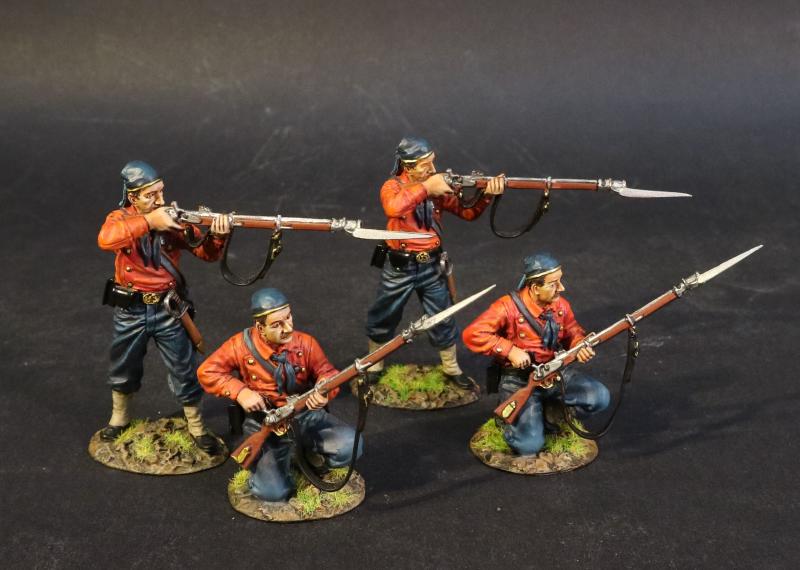Four Infantry Firing and Loading Set #1, 11th Regiment New York Volunteer Infantry, The First Battle of Bull Run, 1861, American Civil War--four figures--RE-RELEASED.
$156.00
Item Number: 11NY-05N
Four Infantry Firing and Loading Set #1, 11th Regiment New York Volunteer Infantry, The First Battle of Bull Run, 1861, American Civil War
The 11th Regiment New York Volunteer Infantry was an infantry regiment of the Union army in the early years of the American Civil War. The regiment was organized in New York City in May 1861 as a zouave regiment, known for its unusual dress and drill style, by Colonel Elmer E. Ellsworth, a personal friend of US president Abraham Lincoln.
The troops were drawn from the ranks of the city’s many volunteer fire companies, and the unit was also known as the Ellsworth Zouaves, First Fire Zouaves, First Regiment New York Zouaves, and US National Guards.
The unit was among the first to occupy the territory of a Confederate state when it captured Alexandria, Virginia on May 24th 1861, less than 24 hours after the commonwealth seceded from the Union.
The regiment then went on to suffer extensive casualties during the First Battle of Bull Run, during the fighting on Henry House Hill, and whilst serving as a rearguard for the retreating Union army.
The regiment would later be stationed near Hampton Roads during the Peninsula Campaign, but experienced little fighting. It was sent back to New York city in May 1862, and the regiment was mustered out of service on June 1862.
There were several attempts to reorganize as a light infantry regiment through the summer of 1863, and many new enlistees were involved in suppressing the New York Draft riots. This was to fail and the enlistees were transferred to the 17th New York Veteran Volunteer Infantry Regiment.
Ellsworth’s Fire Zouaves marched to Manassas in their zouave jackets and trousers, with red firemen’s shirts and blue fezzes. In the July heat the zouave jackets were abandoned, and most men continued in their red or white firemen’s shirts, and some even added havelock-covered kepis to replace the fezzes. With the officers dressed in Grey, this gave the unit, a motley, multi coloured appearance
Released in SEPTEMBER 2020.
Released in NOVEMBER 2022.
